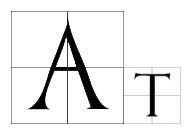Member-only story
The Origins of Women’s Suffrage
How the Wild West, industrialisation, and public education led to votes for women
 At the outbreak of the First World War in July 1914, three countries had fully enfranchised women at a national level. They were New Zealand (1893), Australia (1902), and Norway (1913). The Grand Duchy of Finland, then part of the Russian Empire, had enfranchised women in 1906. Every Australian colony or state had granted women the right to vote, beginning with South Australia in 1894 and ending with Victoria in 1908 (the colonies federated into one country and became states in 1901).
At the outbreak of the First World War in July 1914, three countries had fully enfranchised women at a national level. They were New Zealand (1893), Australia (1902), and Norway (1913). The Grand Duchy of Finland, then part of the Russian Empire, had enfranchised women in 1906. Every Australian colony or state had granted women the right to vote, beginning with South Australia in 1894 and ending with Victoria in 1908 (the colonies federated into one country and became states in 1901).
In the United Kingdom, the Isle of Man allowed female property owners to vote in 1880. In the United States, women had been given the right to vote in Wyoming (1869), Colorado (1893), Idaho (1896), Washington (1910), California (1911), Arizona (1912), Kansas (1912), Oregon (1912), and Alaska (1913). Women had gained the right to vote in Utah in 1870 but lost it in 1877, and women had voting rights in primaries or local elections in some other states. In Denmark, women could vote in local elections.
In other words, women were able to vote in the American west, the British colonies in the antipodes and in Scandinavia before they could vote in the great centres of democracy in London, Paris, and Washington D.C. Why were these…